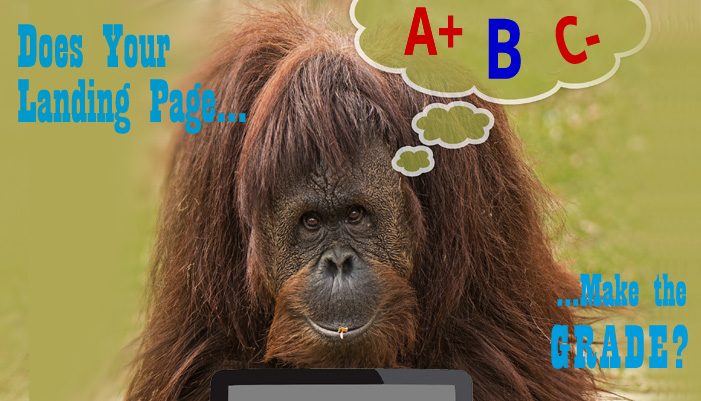You’ve labored long and hard to get your search marketing right where you want it:
- You employed Search Engine Marketing (SEM) techniques by paying for clicks through Google AdWords to get your website front and center in the search results, gaining traction for your new product.
- At the same time, you employed Search Engine Optimization best practices by crafting valuable content filled with keywords your customers and prospects are likely to use to find your product or service.
In a little over three months, Web traffic has gone up 80% and your social media activity has tripled. The results are better than you expected—but what about your sales, what about capturing leads?
It’s one thing to get great search results. It’s quite another to convert your traffic into paying customers or to get them to join your email list.
Search marketing is only a portion of the online marketing equation. Your landing pages—your home page or product specific pages—need to speak to your target audience and do the job of selling. Getting prospects there is only half the battle.
Successful landing pages all have similar elements:
- A compelling sales proposition describing what you’re selling, the solution it offers your target audience, and the various benefits of your product or service.
- An attention grabbing image or video showing your product or service in a context that connects with your target audience (for example, if you sell active wear, you might show images of people in your target demographic wearing your various fashions).
- Reasons to believe that your product or service can do all that your say it can, such as testimonials, press mentions, awards, statistics, etc.
- An easy to respond to call-to-action, such as clicking a buy button, joining a mailing list, downloading a free report in return for your email address, calling for a free consult, or contributing to your Kickstarter campaign.
Content that Serves Two Masters
Your landing page selling proposition needs to serve two masters: the people (customers and prospects) reading it, and the search engine robots indexing the page’s overall content (the keywords and phrases you use) to determine placement within search results.
- From a pure marketing standpoint, the success of your selling proposition depends on your ability to differentiate your product or service from a competitor’s offerings, give your prospective customers reasons to believe that what you offer is the best solution for them, and then provide a seamless, easy-to-manage way for visitors to take the next step to buy your product, engage on social media, join your mailing list, or some other preferred action.
- From a search engine standpoint, your landing page content must contain keywords, phrases, and outbound links you’ve determined to be critical to your search engine success.
Are these two goals—creating content for people and creating content that’s search engine friendly—mutually exclusive or can both “masters” be served successfully?
The answer, of course, is in the hands of an expert, both goals can be achieved. Here’s how:
- Understand the keywords that are important to your website visitors and use them in your content in a way that makes sense to your human readers.
- Use your main keyword in your title/headline. If it’s that important, you should be able to work it into your title. This gives readers and search robots an immediate heads-up about what your page is about.
- Search engines like content, and they will give more weight to pages that have lots of content versus pages that skimp on words. Granted, the main focus of your landing page content is your human readers, so you won’t want to write a novel, but search engines need enough “meat” to get into. Make your words count, and count your words—250 and up is recommended.
- While the value of meta tags is something that’s debated frequently, meta descriptions, titles, and keywords play important roles in how search robots index your page, as well as what your human visitors see in the search results.
- Use headline tags (h1, h2, h3) to emphasize headline and sub-header content, which helps search robots determine the most critical content on the page. If you don’t know what headline tags are, speak to your web developer. He or she can clue you in.
- Make sure your call-to-action is obvious and that the response mechanism works. How many times have you completed a form, hit the submit button, and . . . nothing? You’ve spent time and resources on search marketing and on crafting sales copy. Now spend a little more time on page functions (navigation, email links, submission forms, etc.) to ensure they’re working and that they’re cross-browser compatible.
10 Steps to Better SEO
Getting the most out of search marketing for your business can be a challenge. The rules are constantly changing. To help you get started, Barrel O’ Monkeyz has developed a “10 Steps to Better SEO” White Paper (PDF format) that’s full of ideas and resources you can use right away to begin developing a successful Search Marketing strategy. Click here to download.
Paul June is King Monkey of BARREL O’ MONKEYZ, a full-service digital media and marketing group specializing in more creativity, ideas, and fun for action sports marketing, sportswear marketing, sports product marketing, active lifestyle consumer products, health product marketing, and brands in San Diego and Southern California.
 Contact Barrel O’ Monkeyz for more information.
Contact Barrel O’ Monkeyz for more information.

